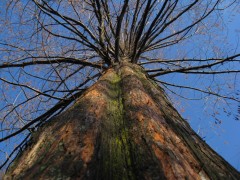
It has a low canopy with a typical clearance of 4 feet from the ground, and should not be planted underneath power lines. It has no significant negative characteristics.ĭawn Redwood is recommended for the following landscape applications ĭawn Redwood will grow to be about 90 feet tall at maturity, with a spread of 25 feet. Deer don't particularly care for this plant and will usually leave it alone in favor of tastier treats. This is a relatively low maintenance tree, and is best pruned in late winter once the threat of extreme cold has passed. It lends an extremely fine and delicate texture to the landscape composition which can make it a great accent feature on this basis alone. The peeling indian red bark adds an interesting dimension to the landscape.ĭawn Redwood is an open deciduous tree with a strong central leader and a distinctive and refined pyramidal form. Neither the flowers nor the fruit are ornamentally significant. The ferny bipinnately compound leaves turn an outstanding coppery-bronze in the fall. Hardy to USDA Zone 4 - cold hardiness limit between -30° and -20☏ (-34.3° and -28.9☌).An ancient and interesting deciduous conifer with a very delicate, ferny appearance, and a very tall, pyramidal habit of growth shaggy, reddish bark is rather appealing, beautiful apricot brown fall color the hardiest of the redwood/sequoia familyĭawn Redwood has emerald green foliage throughout the season. It is also found in eastern Sichuan, southwestern Hubei, and northwestern Hunan provinces, at 2,400 to 4,800 feet (750 - 1,500 m) elevation, where it is typically found on shady, moist sites such as ravines and stream banks. 30☁0'N, 108☄5'E, with an outlying occurrence in northwestern Hunan province at elevations of 2,400 to 4,800 feet (750 - 1,500 m) above sea level.

Its primary occurrence is near the Sichuan-Hubei border, ca.

In autumn, the leaves turn reddish-brown before they are shed with the deciduous branchlets. The upper surface is bright green, with a narrowly grooved midvein, the under surface bearing obscure lines of stomata, lighter green or slightly glaucous, the midrib slightly raised. Leaves (needles) are linear, flattened, straight or slightly curved, about 0.5 inch (12 mm) long and 0.06 inch (1.6 mm broad on mature trees, but on seedlings and young trees are generally 1 to 1.25 inches (24 - 32 mm), sometimes up to 2.5 inches (64 mm) long.


The green deciduous branchlets grow up to about 3 inches (7.5 cm) long, often longer on young trees. The persistent bright, reddish-brown when young, shallowly ridged, carrying the deciduous branchlets, numerous vegetative buds and a few leaves. Branchlets are glabrous, of two kinds, persistent and deciduous. Bark is reddish-brown when young, becoming darker, greyish, fissured, exfoliating in long, narrow strips.Its crown is conical when young, broad and rounded with age. Dawn redwood is a deciduous coniferous species of tree which will quickly grow to mature heights of 145 feet (45 m) tall, with a tapering trunk broadening to the buttressed base. Additions to the International Conifer Registerĭescription.


 0 kommentar(er)
0 kommentar(er)
